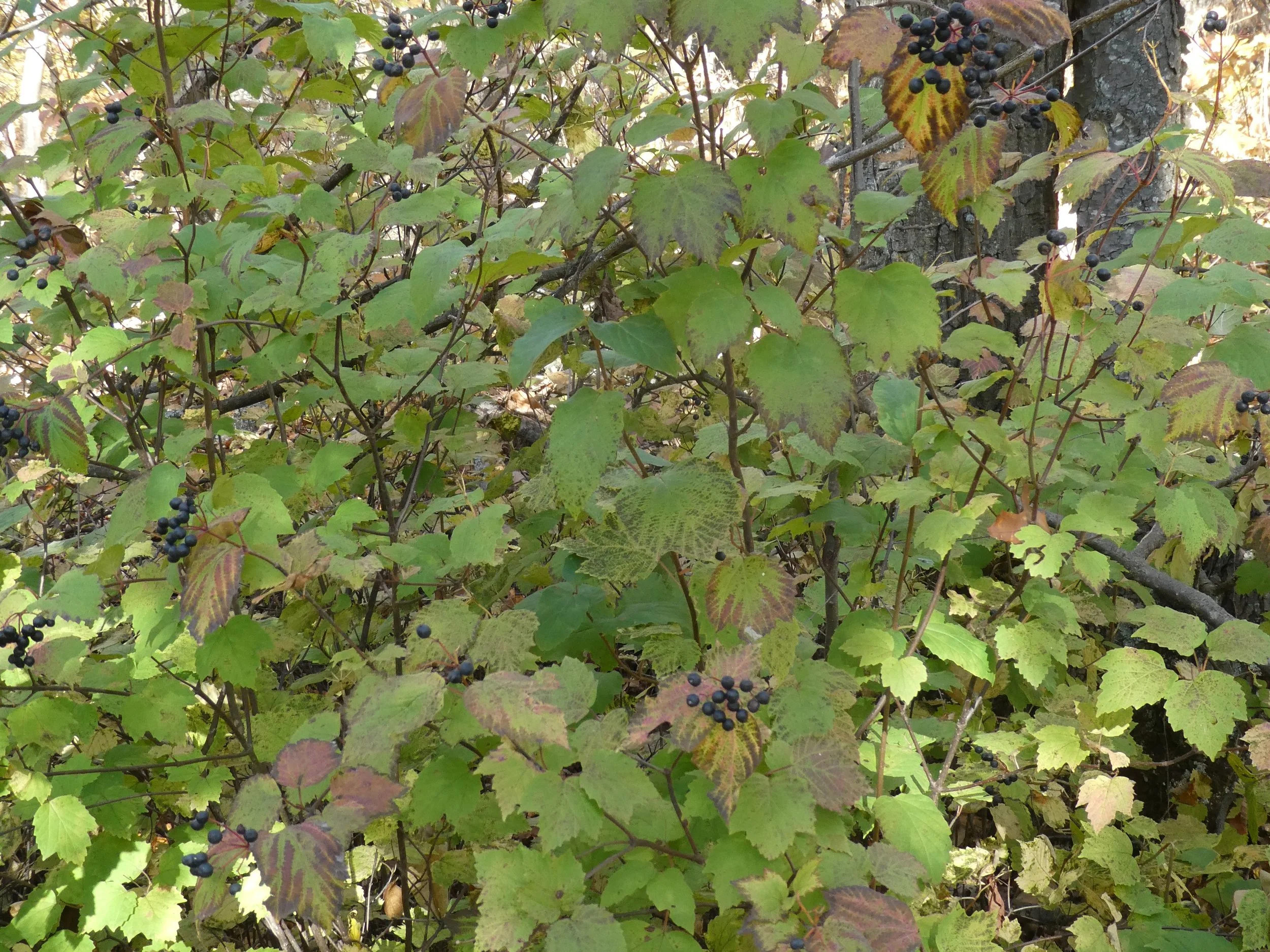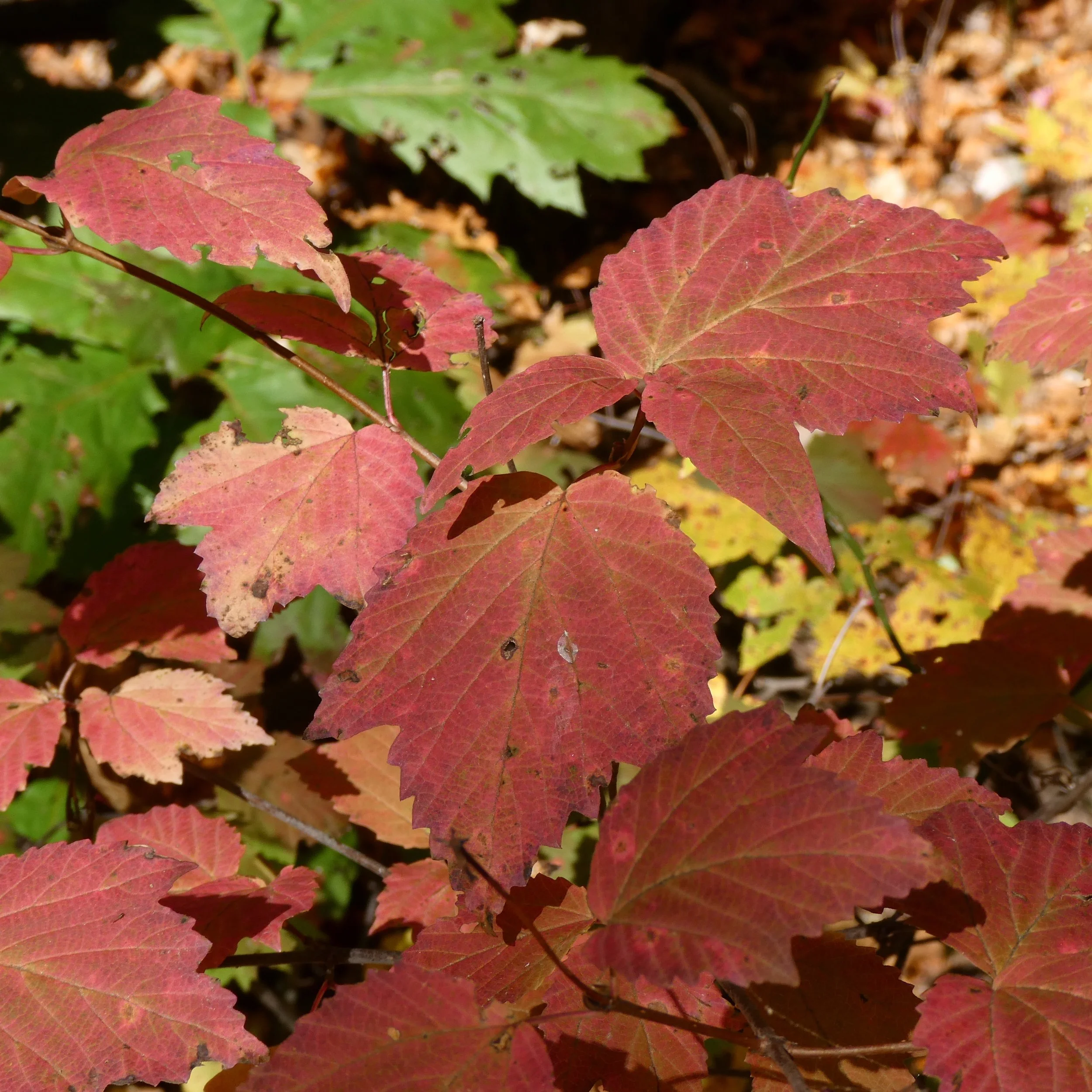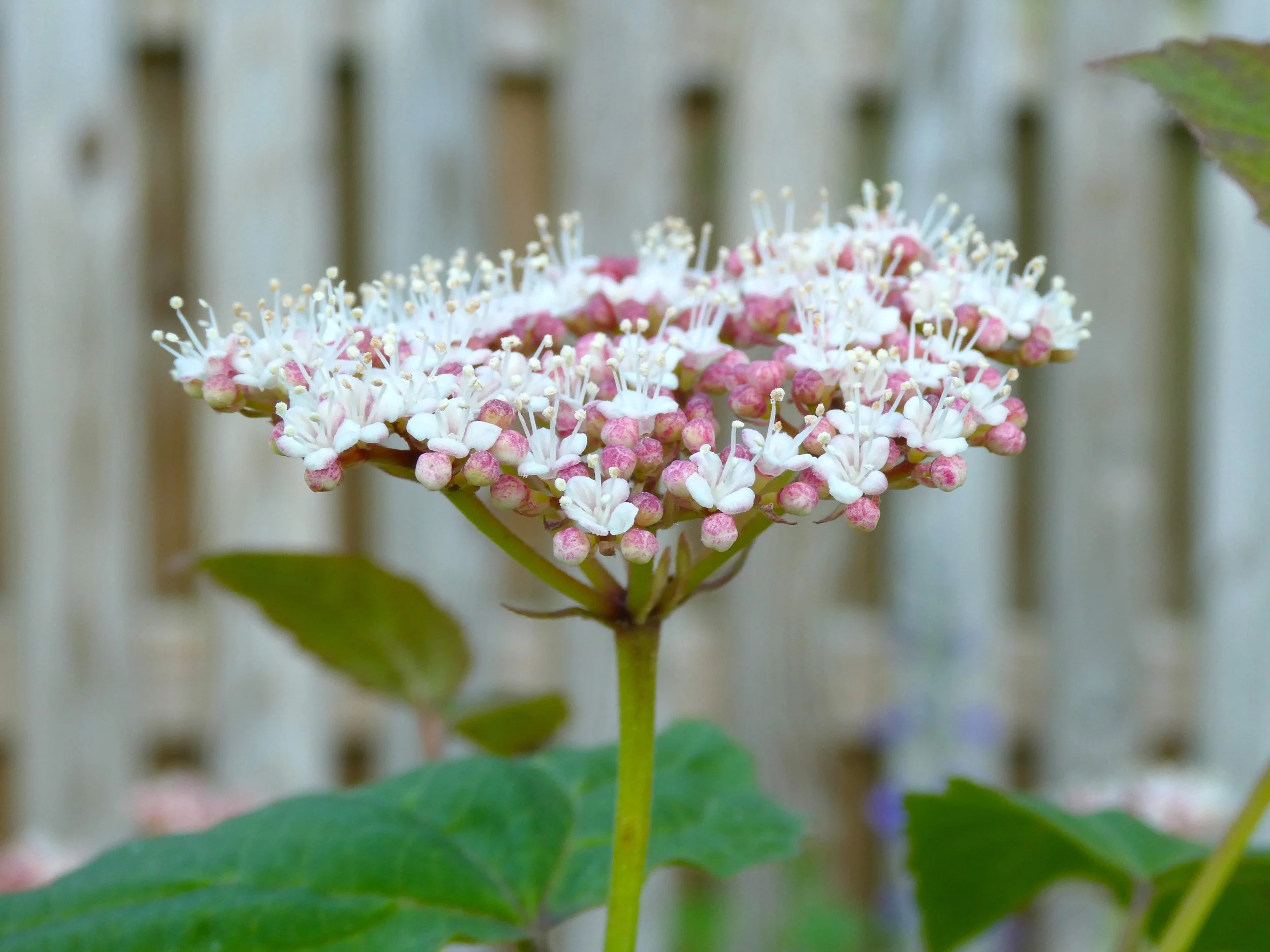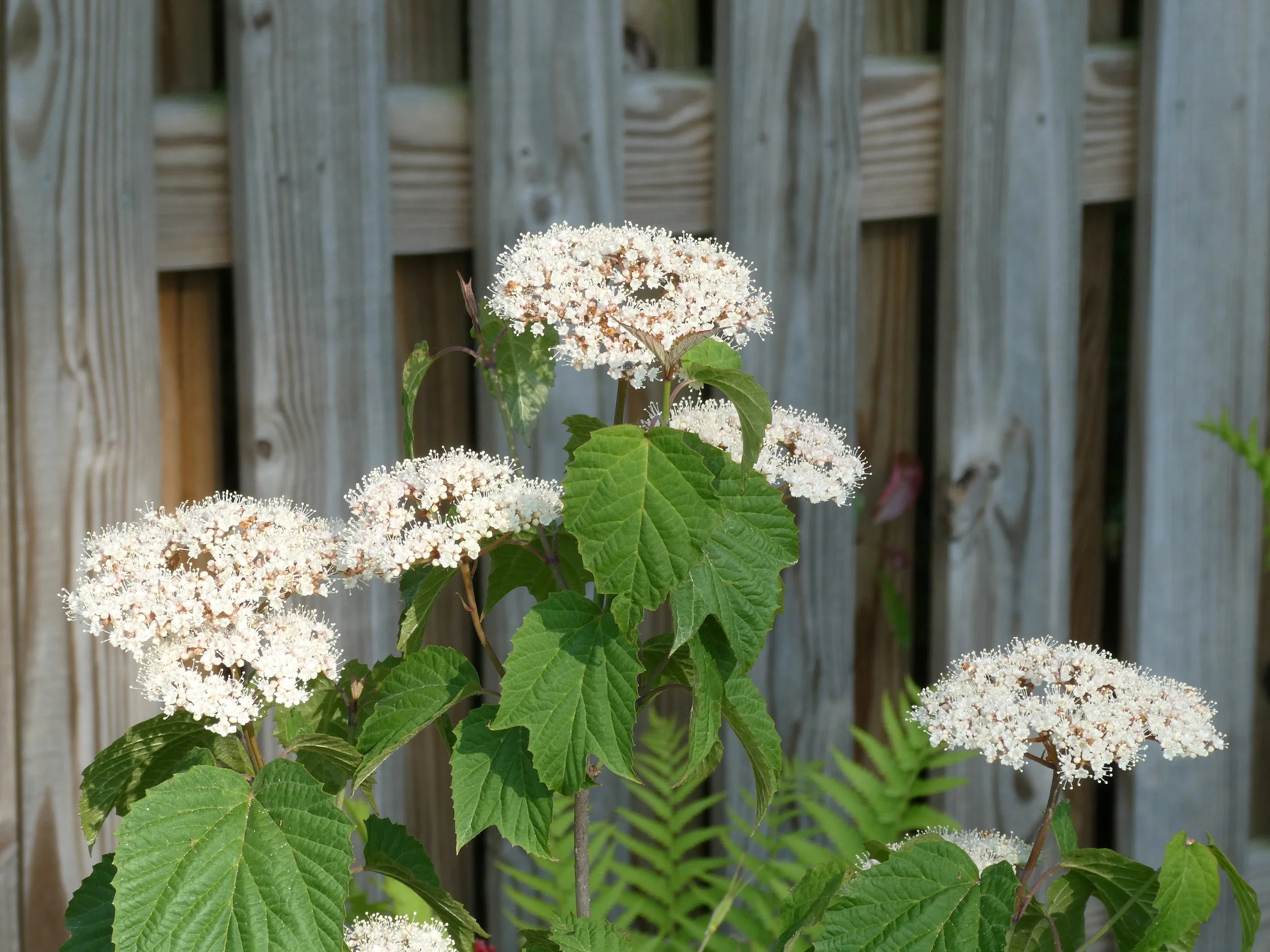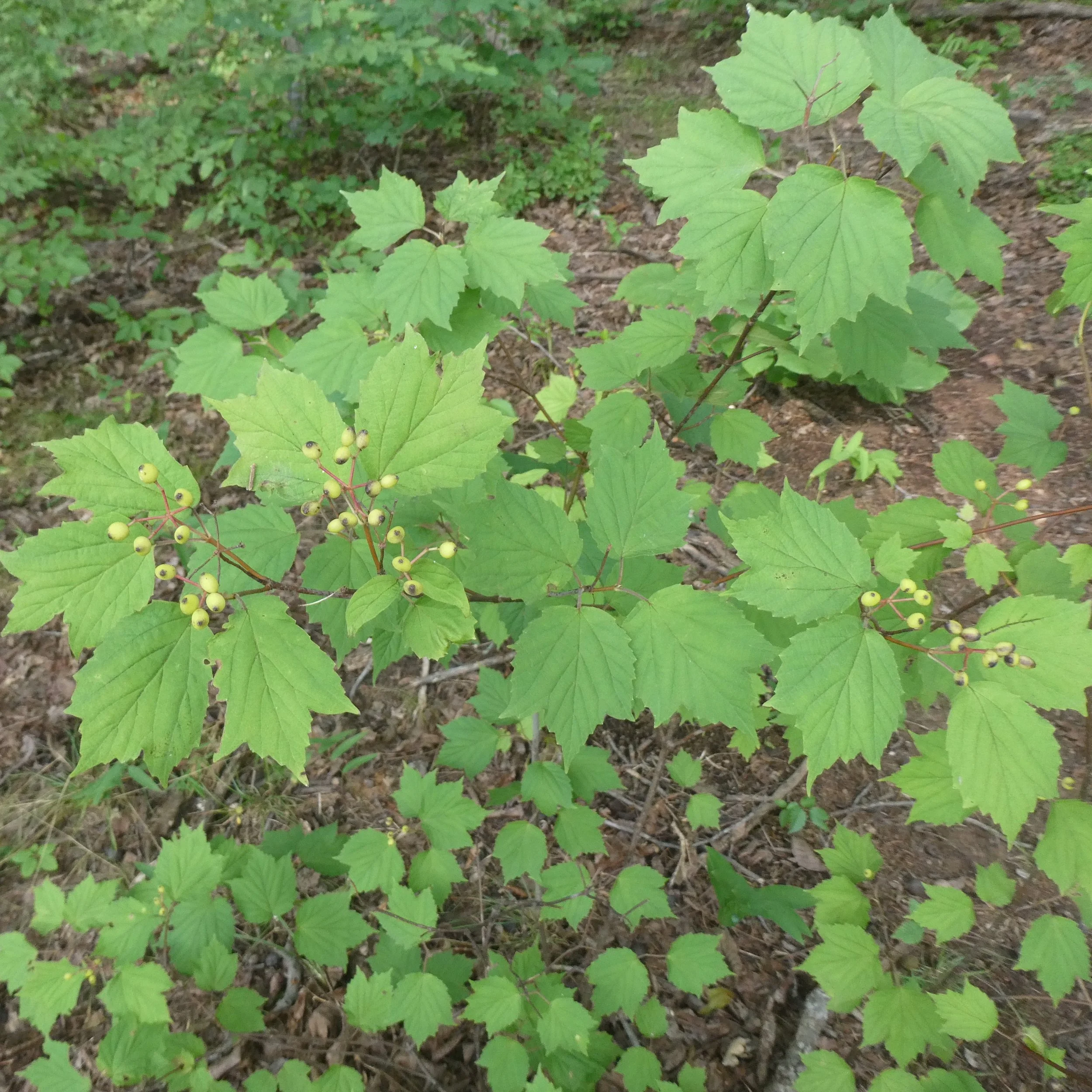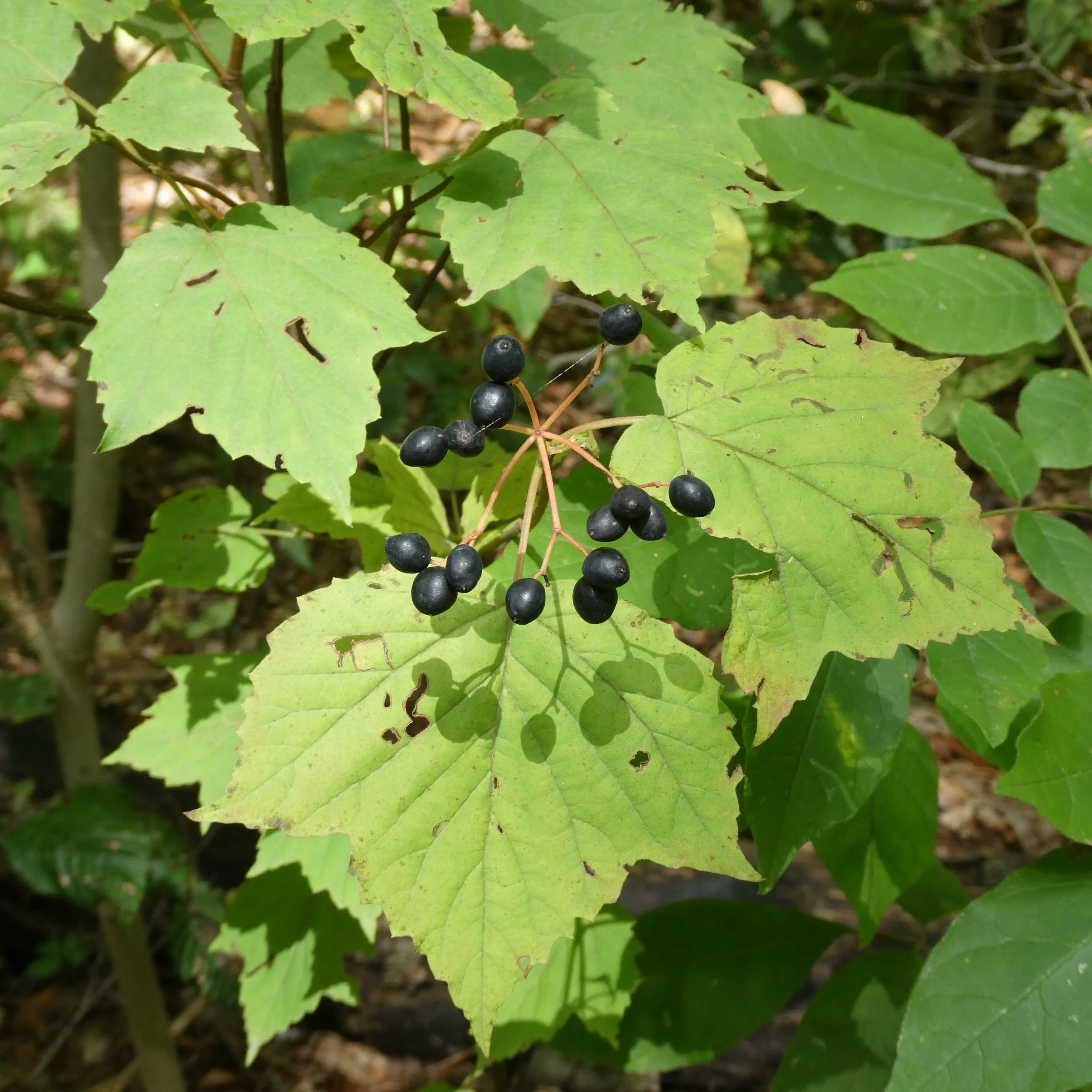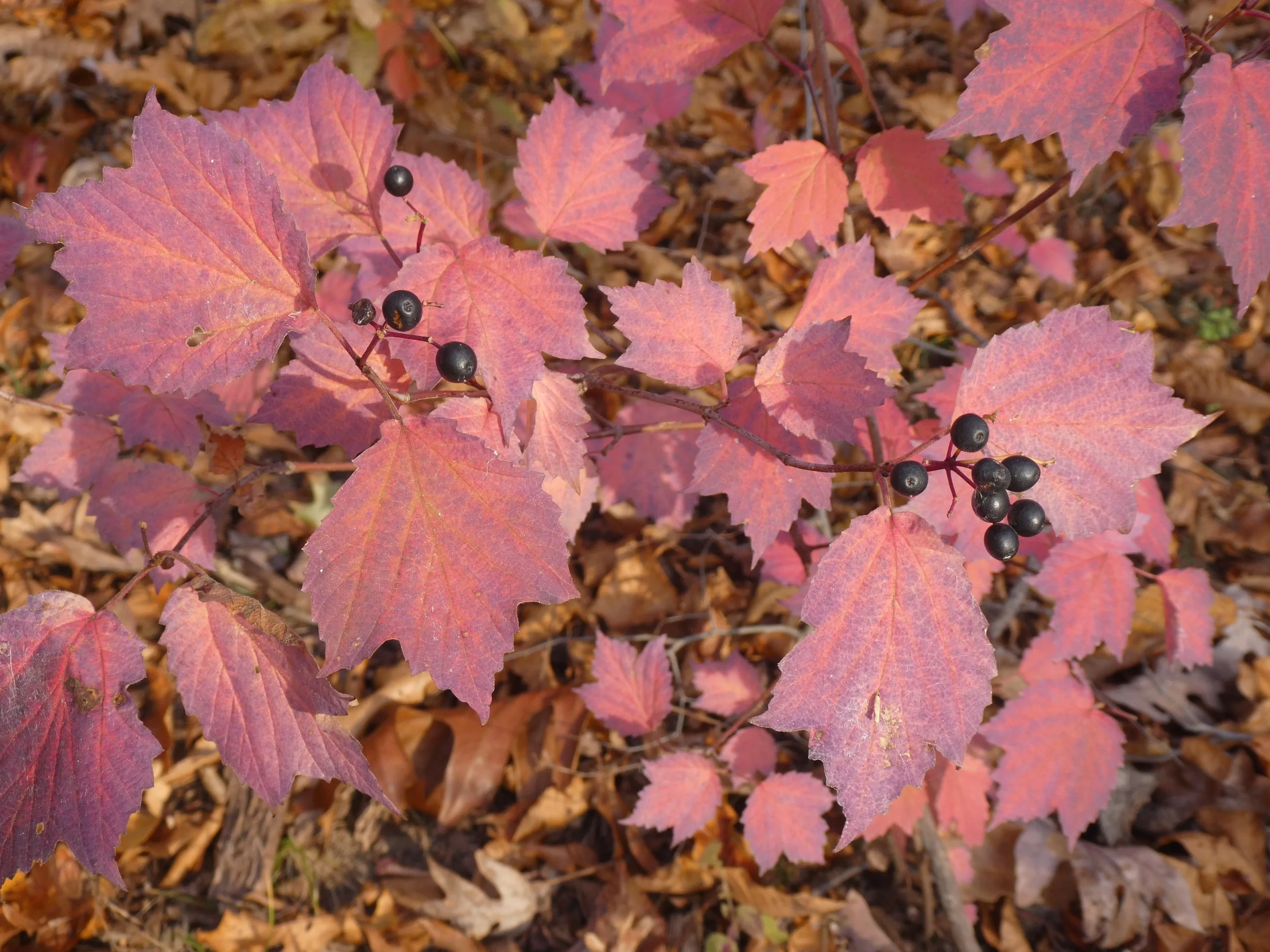Plant of the Week 9: Mapleleaf Viburnum (Viburnum acerifolium)
Mapleleaf Viburnum is a short statured shrub that provides interest throughout the growing season. Smaller than most viburnums, it will grow to between 4 and 6 feet tall at maturity and have an upright, oval form.
Aptly named, the leaves of Mapleleaf Viburnum resemble those of Maple trees (hence the scientific name acerifolium, with acer being the maple genus). In the fall, the green leaves will turn into vibrant shades of burgundy, maroon, red, and even purple.
The flowers occur in flat-topped clusters that can reach up to 4” long. The buds are pink until they open to reveal a cream-white color that is not particularly fragrant. Flowers appear in the spring from April to June, peaking in May.
Flowers turn into berries that start off green, eventually maturing to a dark blue / black color. They sit in upright clusters that offer a nice contrast to the green summer foliage or the burgundy fall color. For abundant berry production, two genetically different (non-clone) shrubs are needed.
Mapleleaf Viburnum is more shade tolerant than most viburnums and its natural habitat is in the understory of dry to moist woodlands. You can find it at Lake Needwood and Blockhouse Point, in addition to many other parks in the area.
Wildlife enjoy this plant and is a food source for 35+ species of birds, pollen and nectar source, larval host to several caterpillars, and provides cover for birds and small mammals. Use this shrub along a border, as a shorter hedge, or in various native gardens.


